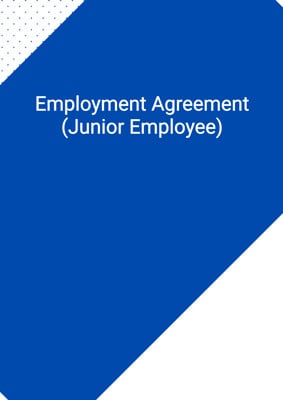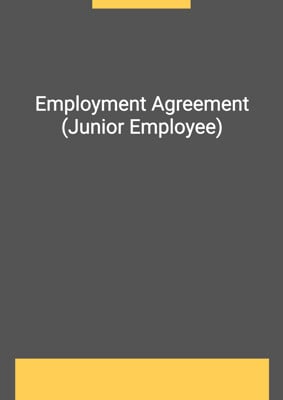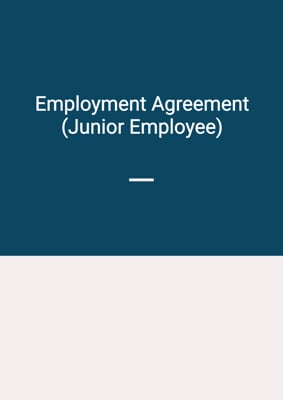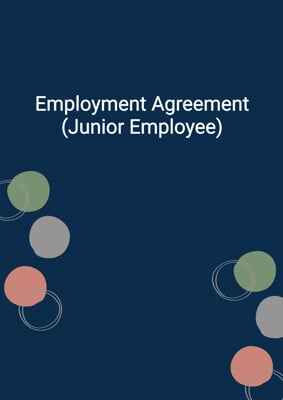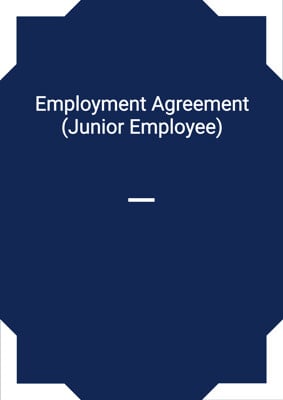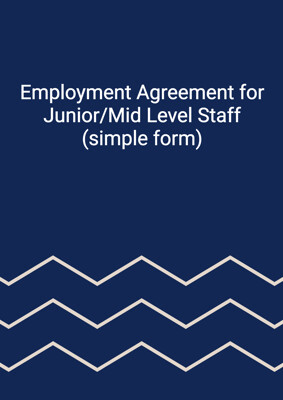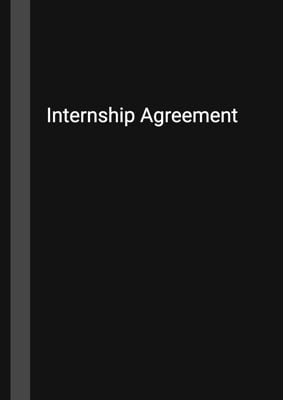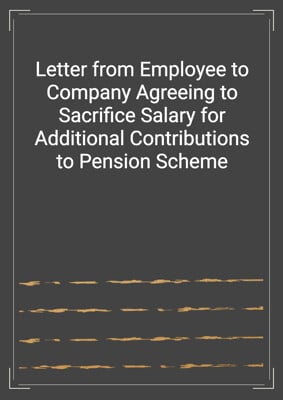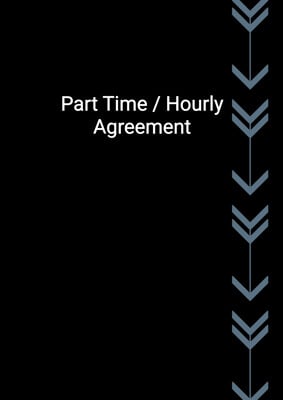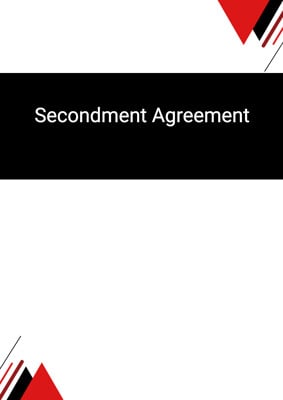How to Tailor the Document for Your Need?
01
Create Document
Fill in the details of the parties. You can click the "Fill with Member’s Information" button to complete it with information saved to your account.
02
Fill Information
Please fill in any additional information by following the step-by-step guide on the left hand side of the preview document and click the "Next" button.
03
Get Document
When you are done, click the "Get Document" button and you can download the document in Word or PDF format.
04
Review Document
Please get all parties to review the document carefully and make any final modifications to ensure that the details are correct before signing the document.
Document Preview
Document Description
The Employment Agreement (Senior Employee) is a crucial document that outlines the terms and conditions of employment between the company and the senior employee. This agreement serves as a legally binding contract that establishes the rights and responsibilities of both parties.
The document begins with a detailed introduction, highlighting the importance of the agreement in establishing a clear understanding between the company and the senior employee. It emphasizes the significance of the agreement in protecting the interests of both parties and ensuring a harmonious working relationship.
The agreement is divided into several sections, each addressing specific aspects of the employment relationship. The first section focuses on the duties and job description of the senior employee. It outlines the position, responsibilities, and reporting structure, ensuring that the employee understands their role within the organization.
The second section covers the period of employment, including the start date, working hours, and leave entitlements. It clarifies the employee's rights and obligations regarding working hours, annual leave, sick leave, and personal days. The section also explains the calculation of leave entitlements and the employee's period of continuous employment for statutory purposes.
The third section discusses the probationary period, outlining its duration and termination conditions. It provides clarity on the rights of both parties during the probationary period and the procedures for termination.
The fourth section addresses remuneration, specifying the monthly salary and the employee's enrollment in the mandatory provident fund scheme. It also clarifies the employee's responsibility for personal taxes.
The fifth section focuses on discipline, emphasizing the employee's obligation to abide by the company's rules and regulations. It prohibits the employee from engaging in any activities that may conflict with the company's interests or disclose confidential information. The section also includes warranties from the employee regarding restrictive agreements and statements about the company.
The sixth section covers termination, outlining the various circumstances under which the agreement may be terminated. It clarifies the rights of both parties in case of termination and the employee's obligations upon termination. It also addresses the employee's assistance in litigation cases and the company's liability for post-termination payments.
The seventh section discusses dispute resolution, specifying the governing law and the process of voluntary mediation. It also mentions the jurisdiction of the state courts in case mediation fails.
The eighth section contains general provisions, including the requirement for written modifications, the binding nature of the agreement, and the severability of clauses. It clarifies that the agreement does not confer rights on third parties and addresses the processing of personal data.
The ninth section focuses on confidentiality, emphasizing the employee's duty to keep the company's confidential information confidential. It prohibits unauthorized copying or removal of confidential information and outlines the employee's obligations regarding the use and modification of such information.
The tenth section addresses intellectual property, requiring the employee to disclose any intellectual property created during employment and assigning all rights and interest in such intellectual property to the company. It also clarifies the employee's obligations regarding past or present employment agreements and the use of the employee's name in publications.
The eleventh section covers non-solicitation and non-compete obligations, prohibiting the employee from soliciting the company's customers, clients, manufacturers, or suppliers upon termination. It also prohibits the employee from communicating with or hiring any covered individuals associated with the company. The section clarifies the consequences of breaching these obligations.
The twelfth section clarifies that the agreement does not confer rights on third parties.
The thirteenth section contains the execution block, where both parties sign to indicate their acceptance of the terms and conditions of the agreement.
In summary, the Employment Agreement (Senior Employee) is a comprehensive document that covers all aspects of the employment relationship between the company and the senior employee. It provides detailed information on duties, job description, period of employment, remuneration, discipline, termination, dispute resolution, confidentiality, intellectual property, and non-solicitation/non-compete obligations. By signing this agreement, both parties acknowledge their rights and obligations and agree to abide by the terms and conditions outlined within the document.
How to use this document?
1. Review the entire Employment Agreement (Senior Employee) document to familiarize yourself with its contents and understand its importance in establishing the terms and conditions of your employment.
2. Pay close attention to the detailed introduction, which highlights the significance of the agreement and its role in protecting the interests of both parties.
3. Read each section of the agreement carefully, starting with the duties and job description section. Understand your position, responsibilities, and reporting structure within the company.
4. Proceed to the period of employment section, which covers important aspects such as start date, working hours, and leave entitlements. Take note of your rights and obligations regarding working hours, annual leave, sick leave, and personal days.
5. Familiarize yourself with the probationary period section, which outlines its duration and termination conditions. Understand the rights of both parties during this period and the procedures for termination.
6. Review the remuneration section to understand your monthly salary and enrollment in the mandatory provident fund scheme. Be aware of your responsibility for personal taxes.
7. Pay attention to the discipline section, which outlines your obligation to abide by the company's rules and regulations. Understand the restrictions on engaging in activities that may conflict with the company's interests or disclose confidential information.
8. Read the termination section carefully to understand the circumstances under which the agreement may be terminated. Be aware of your rights and obligations in case of termination and the assistance you may be required to provide in litigation cases.
9. Familiarize yourself with the dispute resolution section, which explains the process of voluntary mediation and the jurisdiction of the state courts in case mediation fails.
10. Review the general provisions section, which covers important aspects such as written modifications, binding nature of the agreement, and severability of clauses. Understand that the agreement does not confer rights on third parties.
11. Pay attention to the confidentiality section, which emphasizes your duty to keep the company's confidential information confidential. Understand the restrictions on copying, removing, and modifying confidential information.
12. Read the intellectual property section carefully to understand your obligations regarding intellectual property created during employment and the assignment of rights to the company.
13. Review the non-solicitation and non-compete section, which prohibits you from soliciting the company's customers, clients, manufacturers, or suppliers upon termination. Understand the restrictions on communicating with or hiring covered individuals associated with the company.
14. Finally, sign the agreement to indicate your acceptance of its terms and conditions. Keep a copy of the signed agreement for your records.
Note: This guidance provides a brief overview of the document and its key points. It is essential to read the entire document and seek legal advice if needed to ensure a thorough understanding of your rights and obligations as a senior employee.


